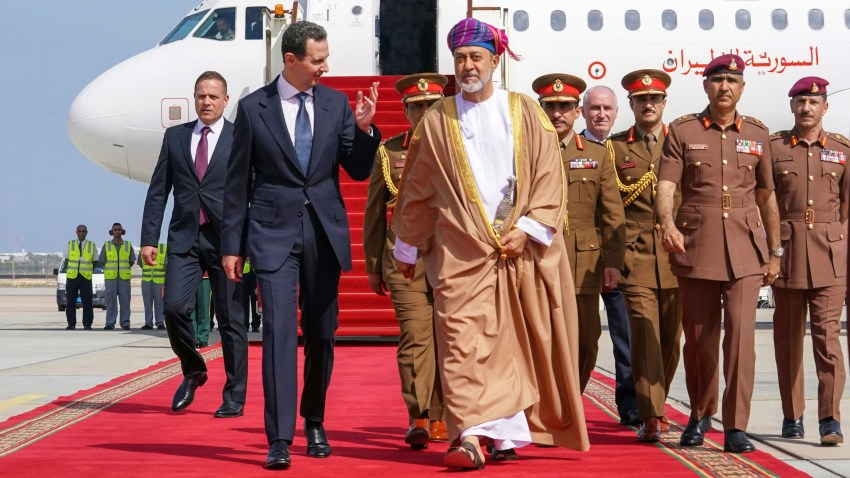The apparent rehabilitation of Syrian President Bashar al-Assad continues apace. Weeks after he made official visits to Oman and the United Arab Emirates, Assad’s gradual emergence from diplomatic isolation gained further momentum when state media in Saudi Arabia announced talks between Riyadh and Damascus to restore consular services between the two countries.
The reestablishment of official relations between Riyadh and Damascus follows a landmark agreement to reactivate ties between Saudi Arabia and Iran, a key backer of Syria. Rapprochement between Damascus and Riyadh would mark another development in regional diplomatic efforts, including by Gulf Arab states to normalize ties with al-Assad, given the prominent role Saudi Arabia played in backing the Syrian opposition in that country’s conflict. The news that Saudi Arabia and other members of the Arab League are on the verge of reinstating Syria’s membership in the organization more than a decade after it was suspended likely signals that his regional isolation is weakening, although a complete rehabilitation of Assad’s international image might take some time.
The latest breakthrough in regional negotiations indicates the deal between Tehran and Riyadh may have a spillover effect in the region, where the rivalry between the two Middle East powers has fueled crises and conflicts, including the Yemen conflict. The Syrian conflict is more complicated. For many years, beginning with the assassination in 2005 of former Lebanese Prime Minister Rafik al-Hariri, who was believed to have been killed by Hezbollah militants linked to Damascus, Saudi Arabia and Syria have had a strained relationship. Hariri was a Sunni Muslim who was also a Saudi national and backed by Riyadh. A rapprochement in 2009 healed that rift and gave way to the restoration of full diplomatic relations between the two countries, but that accord, which appeared to be driven more by Riyadh’s willingness to deescalate regional tensions than a desire to pursue warmer ties with Damascus, did not last long.

